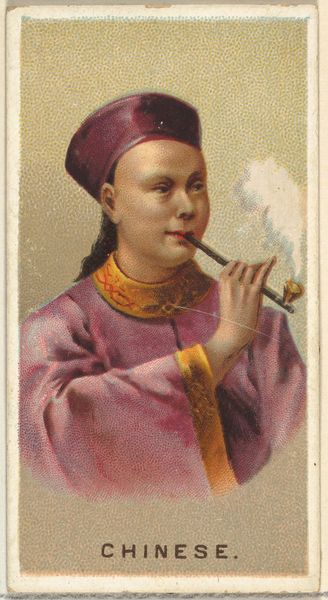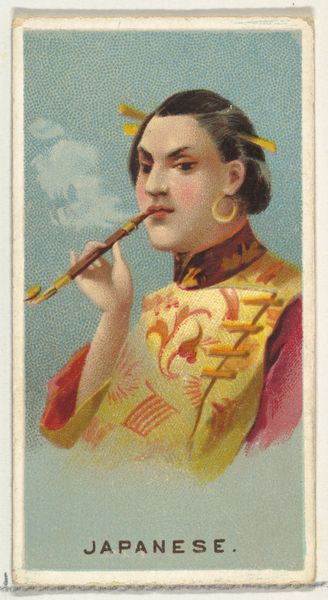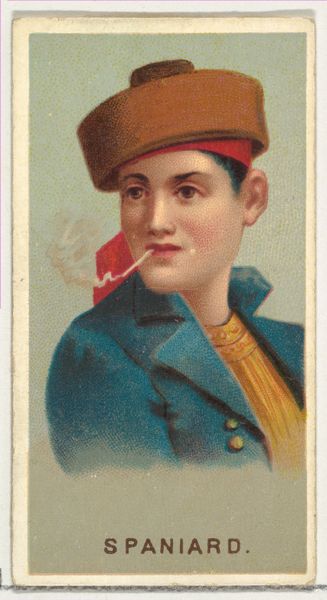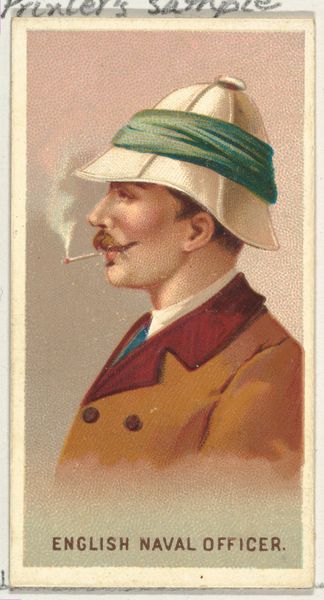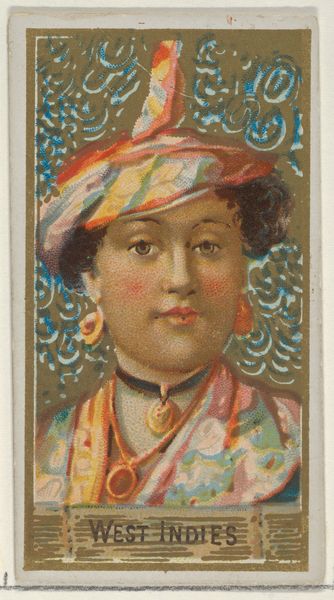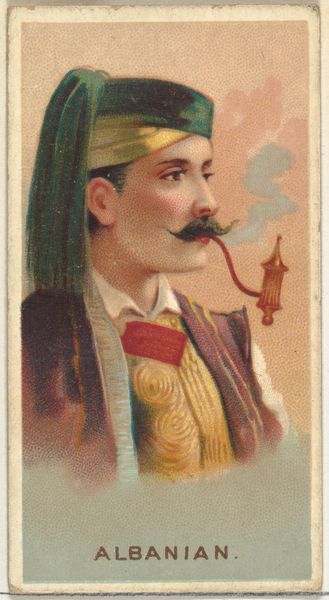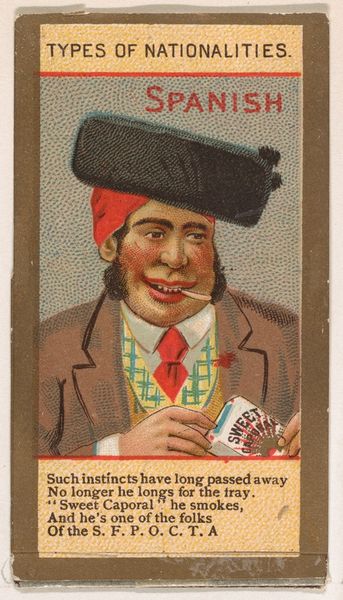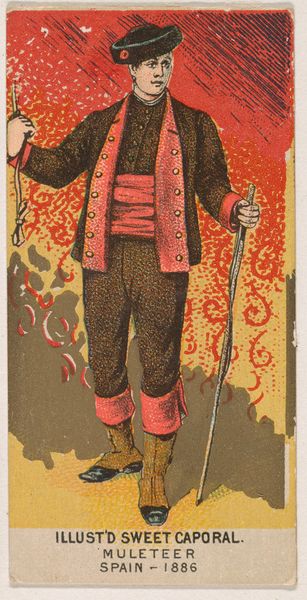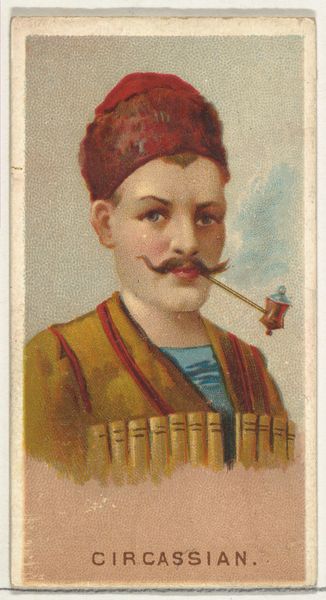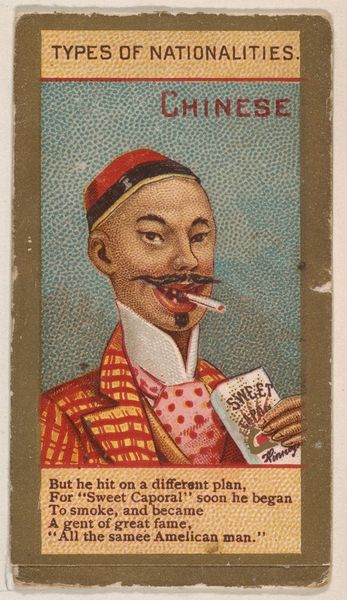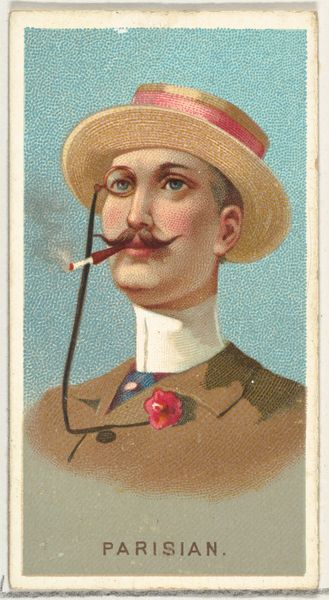
Tibet, from World's Smokers series (N33) for Allen & Ginter Cigarettes 1888
0:00
0:00
Dimensions: Sheet: 2 3/4 x 1 1/2 in. (7 x 3.8 cm)
Copyright: Public Domain
Curator: Let's examine this print titled "Tibet, from the World's Smokers series (N33) for Allen & Ginter Cigarettes," created in 1888. It resides here at the Metropolitan Museum of Art. What are your first thoughts? Editor: Initially, it strikes me as remarkably vibrant, considering its age and intended function. The color palette feels almost deliberately chosen to catch the eye; clearly this small printed image was designed for quick consumption as a trade card. Curator: Indeed. Allen & Ginter's cards, including this one, provide an important perspective on late 19th-century attitudes toward race, ethnicity, and global identity through an Orientalist lens, especially since its placement in a cigarette package promotes the commercialization of other cultures and their commodities. How are Tibetans perceived through this commercial lens? Editor: Well, you've hit upon a key aspect. The rendering has an ethnographic flavor. You can see, for instance, the care with which they reproduced the clothes. And observe how they render smoke and smoking implements, with attention given to capturing specific detail, not for realism, but as a commodity form of cultural identity. Curator: Right. These "World's Smokers" cards, of which this "Tibet" portrait is part, played a role in constructing a global market based on cultural types. We see how advertising became complicit in representing others as exotic and easily consumable stereotypes. Editor: And it's important not to overlook the materiality of the print itself. This was mass-produced, a product of factories and supply chains spanning continents, printed for profit and glued into albums like collectors' trophies. What meaning did the images of labour producing these cards create? Curator: Exactly. It highlights the exploitation inherent in these industries, and then again reflected through the figure on the card. One has to look at these kinds of exploitations in both cultural extraction and mass labour. This intersection reflects an incredibly uneven balance of power, wouldn't you say? Editor: Yes, certainly. What began as what seems like a portrait becomes more clearly another component in a global commodity market where human identities become merchandise themselves. Thank you for walking me through that perspective. Curator: Thank you for adding the essential material considerations of its production. It’s in bridging the space between representation and tangible production that we may achieve more comprehensive understanding.
Comments
No comments
Be the first to comment and join the conversation on the ultimate creative platform.
